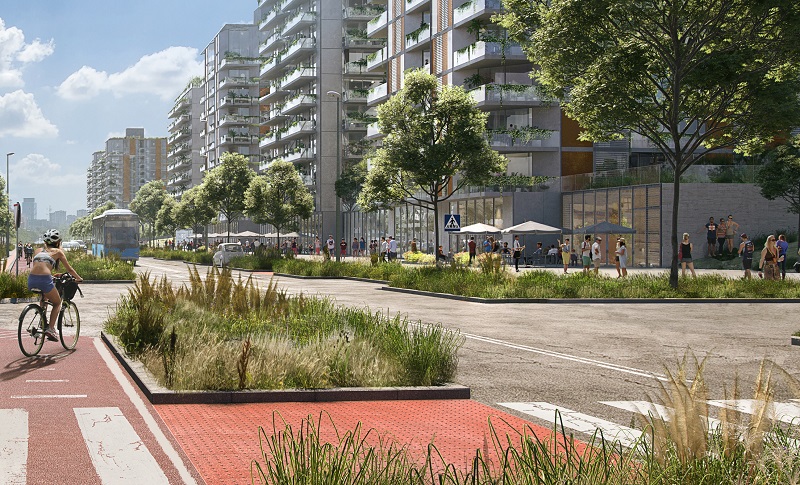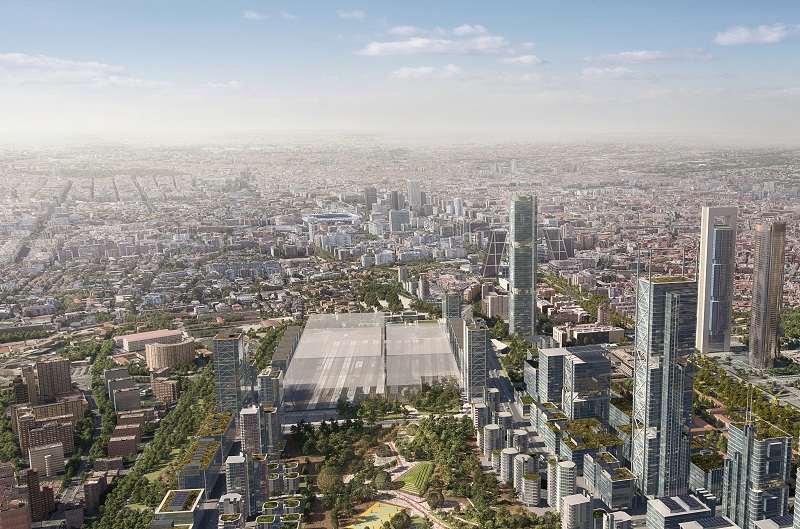16 September 2019
for Madrid Nuevo Norte


This week is European Mobility Week when Europe focuses on sustainable urban transit. Madrid Nuevo Norte, the large urban regeneration project in Madrid, is based on transit-oriented development (TOD). This means that sustainable mobility is not an element added to the urban design, but rather, that the city is planned around sustainable mobility as a fundamental priority.
Beyond providing Madrid with a hyper-connected public transport network, an essential dimension of sustainable mobility is reducing trips and avoiding the use of any means of transport to commute to work, shop, etc. As a dense city, this would be possible in Madrid Nuevo Norte because its main transport hubs would be located next to the busiest areas.
Madrid Nuevo Norte will create three new Metro stations and add a new commuter train station to those already in use in Madrid. Two new intermodal transportation hubs will be built at La Paz and Chamartín, the former at street level. The system will also include an extensive network of urban and intercity buses and an innovative Bus Rapid Transit.
A walkable city, with street life and quality pedestrian public spaces, as well as a 13-kilometre bike lane network, round off the system. This means that 80% of the trips within Madrid Nuevo Norte will be made by sustainable means, and only 20% by private car.

El distrito de negocios de Madrid Nuevo Norte se ubicará junto a la nueva estación de Chamartín, evitando la necesidad de miles de desplazamientos diarios por la ciudad.
However, what truly makes Madrid Nuevo Norte a regional and national benchmark in transport efficiency is the new Chamartín train station, which will become the heart of the project’s mobility system, and the main hub for the Spanish High-Speed Network. The connectivity to the rest of the country and its proximity to Madrid-Barajas Adolfo Suárez Airport are in themselves a great value. This exceptional connectivity has been leveraged and maximised by placing the large business district next to the station.
Anyone who comes to the future CBD from anywhere in Spain via the high-speed train will only have to make a short trip to their destination (be it the office, shopping centre or leisure establishment), or even on foot, by bicycle or in another non-polluting mobility system. This renders thousands of trips unnecessary each day, thus saving energy and reducing travel time and traffic congestion. It will also encourage healthier daily activity since walking and cycling will have an especially prominent role.
Public transport infrastructures are essential to cities. However, they must go hand-in-hand with rational urban design, at the forefront of current urban trends. This, together with other trends, such as teleworking, and new forms of transport, will minimise travel and achieve genuinely sustainable mobility for the future of the city.